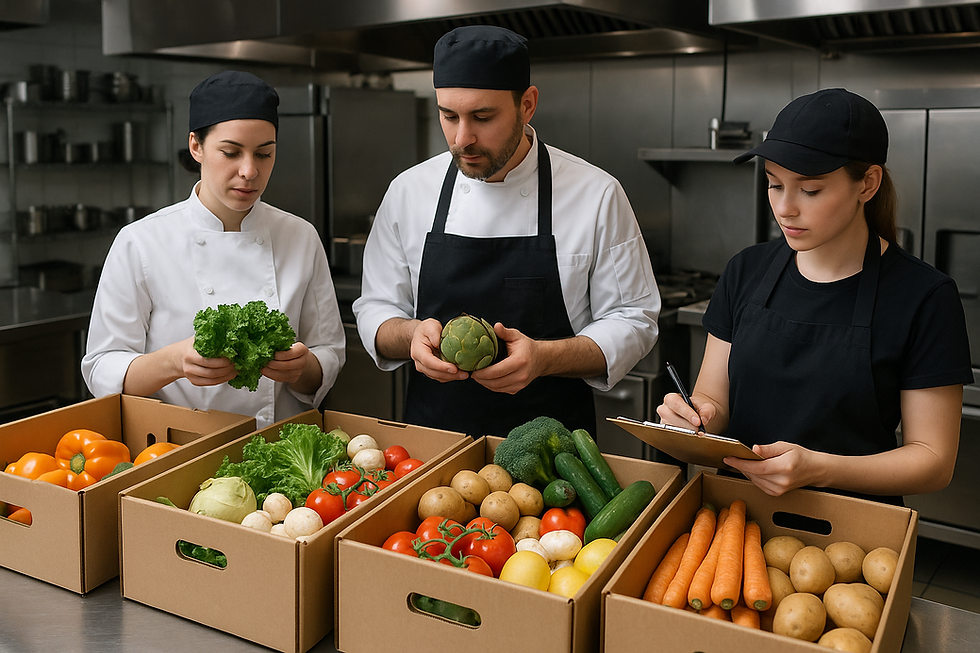A Beginner’s Guide to Buying Wholesale for Restaurants and Cafes
- Olivia Bennett

- Aug 26
- 2 min read
Running a restaurant or café efficiently means sourcing quality ingredients and supplies at the right price. Buying wholesale allows you to reduce costs, maintain consistent inventory, and deliver better value to your customers. This guide walks you through everything a beginner needs to know about buying wholesale for restaurants, from finding reliable suppliers to understanding bulk pricing, storage requirements, and local regulations.

Why Buying Wholesale Matters for Restaurants
Buying wholesale provides multiple advantages for restaurants: lower unit costs, consistent supply, and access to seasonal or bulk items. Wholesale purchases can cover ingredients, kitchen equipment, cleaning supplies, and even packaging materials. Restaurants that optimize their wholesale sourcing often see improved profit margins and reduced waste.
Pro Tip
Keep track of inventory turnover rates to avoid overstocking perishable items.

References / Links:
How to Find Reliable Wholesale Suppliers
Finding trustworthy suppliers is key. Look for:
Verified supplier credentials
Positive reviews from other restaurants
Ability to provide consistent quality and delivery schedules
Flexible bulk quantities
Tips for Beginners:
Attend food expos and trade shows
Use online wholesale marketplaces
Ask for sample shipments before committing to bulk orders

References / Links:
Understanding Bulk Pricing and Cost Management
Bulk pricing varies by volume, seasonality, and product type. Restaurants must calculate cost per serving to ensure profitability. Factor in storage, perishability, and delivery costs. Advanced tools like inventory management software can track purchases and reduce waste.
Quick Tip:
Compare multiple suppliers and request tiered pricing for different order quantities

Storage, Handling, and Safety
Proper storage is crucial for perishable items. Refrigeration, dry storage, and rotation practices (FIFO: first in, first out) reduce spoilage. Suppliers often provide guidance on shelf life, packaging, and handling best practices.

References / Links:
Seasonal Ingredients and Menu Planning
Aligning menu with seasonal wholesale availability ensures freshness and cost-efficiency. Create a flexible menu that allows swapping ingredients based on supplier stock and seasonal trends.
Pro Tip:
Build supplier relationships that allow early access to seasonal products

Final Thoughts
Buying wholesale is a strategic move for restaurants and cafés that want to maximize profit while maintaining quality. By sourcing from trusted suppliers, managing inventory efficiently, and planning menus around seasonal availability, restaurant owners can save money, reduce waste, and delight customers consistently.
📧 Contact Jefferson Wholesale to explore our verified wholesale catalog for restaurants and cafés.

Comments